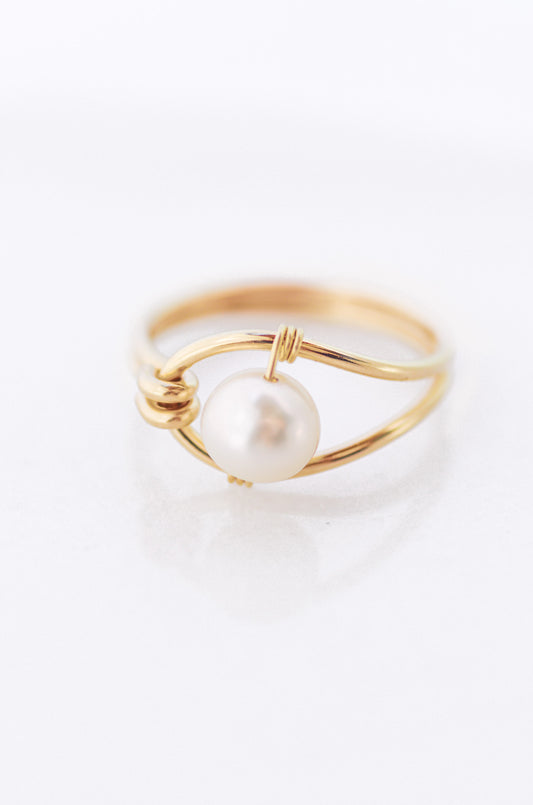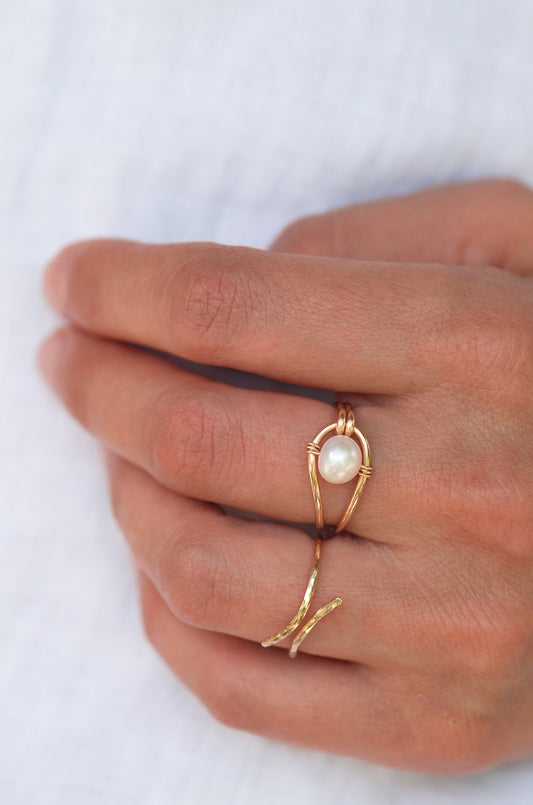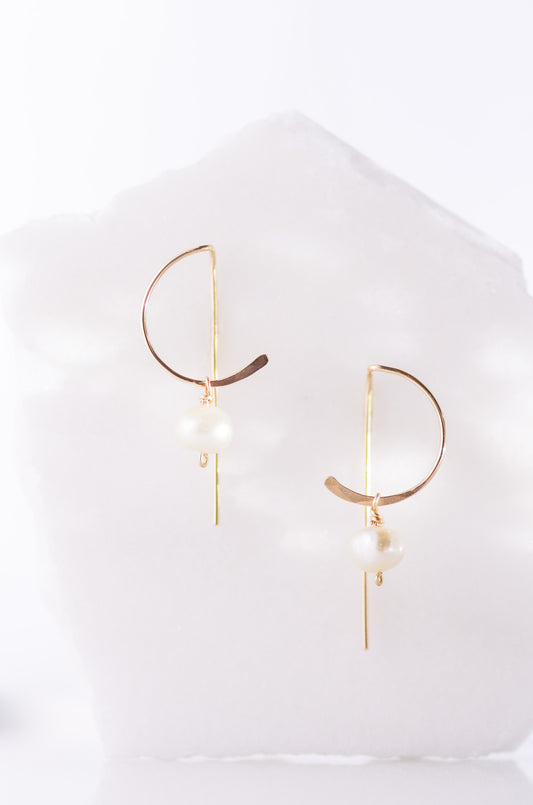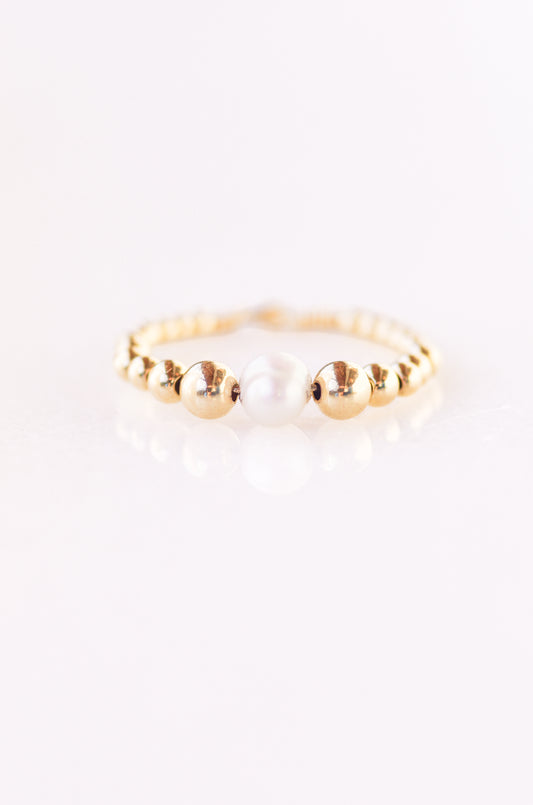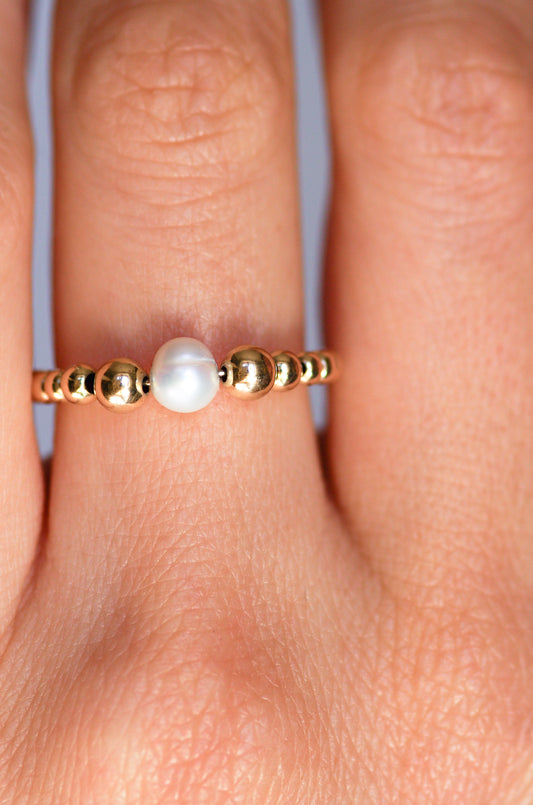How to Spot Greenwashing in Gold-Plated Jewelry
Condividere
Not all "eco-friendly" claims in jewelry are true. Many brands use greenwashing - misleading marketing tactics that exaggerate or fabricate their environmental efforts. Gold-plated jewelry is especially prone to this due to its chemical-heavy production and short lifespan, which contribute to waste.
Here’s how to spot greenwashing:
- Vague claims: Words like "sustainable" or "eco-conscious" without proof or specifics.
- Lack of transparency: No details on materials, sourcing, or production methods.
- No certifications: Absence of trusted third-party verification like RJC or Fairtrade Gold.
For a better choice, consider gold-fill over gold-plated jewelry. It uses more gold, lasts longer, and avoids harmful chemicals during production. Always look for brands that share clear sourcing details, use recycled materials, and provide certifications to back up their claims.
How Greenwashing Works in the Jewelry Industry
What Is Greenwashing?
Greenwashing is when brands make themselves look environmentally responsible without taking meaningful action to back it up.
In the jewelry world, this often means tossing around vague terms like "eco-conscious", "sustainable", or "ethically made" without explaining what those words actually mean. For instance, a company might highlight its use of recycled packaging but ignore the fact that their gold-plating process relies on harsh chemicals. These types of claims often focus on small, surface-level changes while hiding the bigger environmental impacts. To make matters worse, brands frequently use visual tricks - like green tones, images of nature, or eco-friendly symbols - to give off an environmentally conscious vibe, even if their practices tell a different story.
This kind of marketing is especially common in gold-plated jewelry.
Why Gold-Plated Jewelry Brands Use Greenwashing
Let’s dive into why greenwashing is so prevalent among gold-plated jewelry brands.
Gold-plated jewelry has some built-in challenges that make true sustainability difficult, which is why some brands resort to misleading claims. For starters, the thin gold layer and the chemical-heavy electroplating process mean these pieces often wear out quickly, leading to more waste. Traditional electroplating involves hazardous chemicals, like acids, that create waste requiring careful disposal - something not all brands handle responsibly.
On top of that, supply chains for gold-plated jewelry are often murky. The base metals - such as brass, copper, or nickel - might come from suppliers with questionable environmental or labor practices. Instead of undergoing strict audits, some brands sidestep accountability by making sweeping, unverified claims like their materials are "responsibly sourced."
Cost is another big factor. Adopting truly sustainable practices - like using recycled metals, avoiding harmful chemicals, or ensuring ethical sourcing - can be expensive. For brands competing on price, it’s easier (and cheaper) to market themselves as eco-friendly than to actually invest in sustainable changes.
Finally, the jewelry industry lacks strong regulations when it comes to environmental claims. This lack of oversight allows brands to make bold sustainability statements without much fear of consequences.
Recognizing these tactics can help consumers spot misleading claims and make more informed choices.
How to Spot Greenwashing: Warning Signs to Look For
Here’s how to identify red flags in environmental claims. Recognizing these signs can help you avoid supporting brands that focus more on marketing than meaningful sustainability efforts.
Vague Environmental Claims Without Proof
One of the biggest warning signs is when brands use broad, generic terms without offering any specific evidence. Buzzwords like "eco-friendly", "sustainable", "green", or "ethically made" might sound appealing, but they’re often meaningless without clear explanations.
For example, if a jewellery brand calls its products "environmentally conscious" but fails to explain how its production methods differ from conventional ones, that’s a problem. Phrases like "we care about the planet" or "committed to sustainability" are equally hollow without details backing them up.
Watch out for phrases like:
- "Made with love for the environment"
- "Eco-conscious design"
- "Sustainably crafted"
- "Planet-friendly jewellery"
Brands that are genuinely sustainable will share specific details about their processes, materials, and measurable improvements. If a brand avoids such transparency, it might be engaging in greenwashing.
Missing Information About Materials and Production
A lack of transparency about materials and manufacturing methods is another clear warning sign. Genuine sustainability requires openness about where materials come from and how products are made. If a brand is vague or secretive in these areas, it’s worth questioning their commitment to sustainability.
Key details to look for include:
- Gold content and thickness: How much gold is actually used in the piece?
- Base metal composition: What metals form the core structure?
- Sourcing details: Where are the raw materials sourced from?
- Production methods: How is the gold bonded to the base metal?
- Chemical usage: Are harmful chemicals involved in the process?
For instance, a transparent brand like Rays & Riches openly shares that their gold-fill method uses heat and pressure bonding instead of chemicals, and their products contain 100 times more gold than standard gold-plated jewellery. Additionally, they use ethically sourced and recycled metals, along with repurposed vintage pearls and gemstones.
When brands fail to provide such details - or lack third-party verification - it’s a strong indication that their sustainability claims might not hold up.
No Independent Certifications or Verification
Independent certifications are one of the most reliable ways to verify a brand’s environmental claims. Truly sustainable brands often seek third-party validation to back up their practices.
"Sustainability certifications play a vital role. These certifications ensure that the jewellery has been produced using responsible manufacturing processes and aligns with environmentally friendly practices." – Charles & Colvard [1]
Legitimate certifications to look for include:
- Responsible Jewellery Council (RJC) Certification: Covers the entire supply chain and addresses social, ethical, and environmental issues. The RJC is recognized as "the world's leading standard-setting organisation for the jewellery and watch industry" [2]. Certified brands have a unique RJC Certification number listed on their website [3].
- Fairtrade Gold Certification: Ensures gold is sourced responsibly, with fair labour practices and safe working conditions [1].
- Certified B Corporation: Indicates a company meets high social and environmental standards [1].
- Forest Stewardship Council (FSC) Certification: Applies to sustainable packaging materials [1].
Reputable brands often secure multiple certifications - such as Fairtrade Gold, RJC, FSC, and B Corporation - to demonstrate their ethical practices.
How to check certifications:
- Look for certification logos on the brand’s website.
- Visit the certifying organisation’s website to confirm the brand’s membership.
- Remember that legitimate certifications are backed by independent, third-party audits [3].
If a brand claims to be sustainable but doesn’t have any independent certifications or third-party verification, it’s wise to remain sceptical. While certifications aren’t the only way to prove a commitment to sustainability, their absence often raises questions about the validity of the claims.
How to Check if Brand Claims Are Real
Once you've noticed signs that a brand might be overstating its sustainability efforts, it’s time to dig deeper. Verifying these claims means asking the right questions and knowing where to look for solid proof.
Checking Where Materials Come From
The origin of materials is at the heart of any honest sustainable jewellery claim. Transparent brands will openly share details about where their materials come from and how they’re sourced or recycled. For instance, they should be able to trace their materials "from mine to market", providing the specific mine or source location and the country of origin for precious metals and gemstones [4].
If a brand claims to use recycled materials, ask for specifics. What percentage of the material is recycled? Where does it come from - old jewellery, industrial waste, or discarded electronics? These details matter [4].
Ethical labour practices are another key area to verify. Brands should confirm that their sourcing involves fair wages, safe working conditions, and no child labour or human rights abuses [4]. If they use repurposed materials, ask about how these are verified. For example, Rays & Riches gives vintage pearls and gemstones a second life by repurposing them.
When evaluating a brand, request clear sourcing details like the country of origin, supplier information, and any ethical certifications they hold. Once you’ve confirmed the material origins, take a closer look at how the jewellery is made.
Learning About How Jewellery Is Made
A brand’s production methods can reveal whether its environmental claims hold up. Ask for specifics about bonding and plating techniques. Traditional gold-plating often involves harmful chemicals, while greener alternatives like heat and pressure bonding are more environmentally friendly.
Take Rays & Riches as an example. They use a gold-fill method, where gold is bonded to the base material with heat and pressure, avoiding chemical waste and reducing the risk of skin irritation. This method also typically uses much more gold than standard gold-plating - sometimes 100 times more - making it more durable and less wasteful.
Local production can also be a good indicator. Brands that manufacture locally often have better control over their processes and reduce emissions tied to transportation. If a brand claims to avoid harmful chemicals, ask them to specify which ones are excluded and what alternatives they use.
Lastly, check out the brand’s packaging and shipping practices for further insight into their sustainability efforts.
Looking at Packaging and Shipping Methods
Packaging and shipping practices can be a window into how committed a brand is to its environmental goals. Start by examining the packaging materials. Sustainable brands typically use recyclable, biodegradable, or minimal packaging. Look for certifications like the Forest Stewardship Council (FSC) mark on paper products to confirm eco-friendly practices.
If a brand promotes carbon-neutral shipping, ask how they achieve it. Some partner with shipping companies that offer carbon offset programmes, while others calculate and offset emissions themselves. For example, Rays & Riches emphasizes carbon-neutral shipping alongside their local, small-scale operations, which naturally cut down on transportation emissions.
Also, pay attention to whether the brand uses innovative packaging solutions. Biodegradable mailers, recycled cardboard, or reusable packaging components are all good signs. Sustainable brands often aim for packaging that’s minimal yet thoughtful, reducing waste without compromising on a pleasant unboxing experience.
sbb-itb-2024ddf
Why Gold-Fill Is Better Than Gold-Plating for the Environment
When comparing gold-fill to gold-plating, the differences go beyond aesthetics - they deeply influence environmental impact, durability, and production practices. Let’s break down why gold-fill stands out as the more sustainable choice.
Gold Content and Jewellery Longevity
The primary distinction lies in gold content. Gold-filled jewellery contains approximately 100 times more gold than standard gold-plated pieces [7]. By law, gold-filled items must meet this higher gold content standard. In contrast, gold-plated jewellery typically has less than 0.05% gold by total weight [5]. The gold layer in plated jewellery is incredibly thin, often between 0.175 and 2.5 microns [6], which wears away quickly.
This higher gold content translates to greater durability. With proper care, gold-filled jewellery can last a lifetime, standing up to everyday wear, water, and heat [5][6][7]. On the other hand, gold-plated pieces tend to wear down rapidly. Once the thin gold layer erodes, the base metal underneath is exposed, leading to tarnishing [5][6].
From an environmental standpoint, this durability is a game-changer. Jewellery that lasts for decades reduces the need for frequent replacements, cutting down on resource use and waste. That’s why Rays & Riches opts for gold-fill, ensuring their pieces are built to last with significantly higher gold content.
Cleaner Bonding Methods
The production process also plays a critical role in sustainability. Gold-fill uses a mechanical bonding process that relies on heat and pressure, avoiding the use of harsh chemicals. This method is not only safer but also eliminates the environmental risks associated with chemical waste.
In contrast, gold-plated jewellery is made through electroplating - a process that involves electrochemical applications and various chemicals. The downside? Electroplating can release toxic substances like cyanides, heavy metals, and acids into liquid effluents, contributing to pollution and environmental harm.
By using heat and pressure instead of chemicals, gold-fill production avoids these hazards entirely. This method also benefits sensitive skin, as it eliminates chemical residues that can cause irritation. Rays & Riches embraces this chemical-free approach, aligning with their mission to reduce chemical waste and create jewellery that’s better for both the planet and the wearer.
Recycled Materials and Repurposed Gemstones
Sustainability doesn’t end with production - it extends to material sourcing. Using recycled metals helps reduce the need for new mining operations, which are energy-intensive, water-consuming, and often destructive to ecosystems.
Similarly, repurposing vintage gemstones and pearls avoids the environmental toll of mining new materials. Extracting precious stones often leads to habitat destruction, water contamination, and other ecological issues. By giving existing materials a second life, brands significantly cut down on these environmental impacts.
This circular approach to jewellery design - combining recycled metals with repurposed stones - keeps materials in use rather than extracting new ones. While it requires extra effort to source and verify recycled materials, the environmental benefits are undeniable. Rays & Riches incorporates ethically sourced recycled metals and vintage gemstones, proving that beautiful jewellery can also be kinder to the planet.
| Aspect | Gold-Fill | Gold-Plated |
|---|---|---|
| Gold Content | At least 5% by weight (100x more gold) | Less than 0.05% by weight |
| Durability | Can last a lifetime with proper care | Typically lasts up to 1 year |
| Bonding Method | Heat and pressure (chemical-free) | Electroplating with chemicals |
| Environmental Impact | Lower due to longevity and clean production | Higher due to frequent replacement and chemical waste |
| Tarnish Resistance | Highly resistant, tarnishes rarely | Tarnishes quickly once gold layer wears off |
How to Choose Eco-Friendly Jewelry Brands
Selecting eco-friendly jewelry brands means looking beyond marketing claims and digging into their actual practices. It’s about distinguishing genuine efforts from superficial greenwashing.
Start with transparency. A trustworthy brand openly shares details about its materials, sourcing, labor practices, and environmental impact. Instead of vague terms like "eco-friendly", they explain their processes clearly. For example, Rays & Riches uses gold-fill, which contains 100 times more gold than standard plating, bonded through heat and pressure, and relies on recycled metals. This level of openness is a solid foundation for evaluating their sustainability efforts.
Ethical sourcing is non-negotiable. Look for brands that use certified conflict-free materials, ensuring their sourcing avoids harm. Certifications like Fairtrade also indicate that miners are paid fairly and work in safe conditions. A good brand will provide traceable information about its materials, from the mine to the final product.
Production methods are just as important as materials. Eco-conscious brands adopt manufacturing techniques that limit waste, conserve water and energy, and reduce pollution. For instance, the heat and pressure method used in gold-fill production not only minimizes waste but also creates safer working environments.
Labor practices speak volumes about a brand's values. Truly sustainable companies back their commitment with evidence of fair wages, safe workplaces, and community support. Many work directly with artisans, investing in their well-being and local economies.
Sustainable packaging and carbon-neutral shipping are additional markers of a brand’s dedication to reducing its overall footprint. Many companies offset their shipping emissions and use recyclable or biodegradable materials, often opting for reusable pouches or minimalist packaging designs.
Recycled materials are a win for the planet. By incorporating vintage gemstones or recycled metals, brands embrace circular economy principles, reducing their environmental impact.
The best eco-friendly jewelry brands don’t rely on a single initiative - they combine multiple sustainable practices. When a brand is open about its sourcing, production, and labor ethics, it’s a sign they’re serious about their commitment.
While sustainable jewelry often comes with a higher price tag, the investment pays off. High-quality pieces, like those made with gold-fill, are more durable and long-lasting, making them a smarter choice both economically and environmentally over time.
FAQs
What certifications ensure a jewelry brand’s sustainability claims are trustworthy?
When assessing claims about sustainability, certifications can provide clarity and assurance. For example, the Responsible Jewellery Council (RJC) promotes ethical practices throughout the supply chain, while Fairtrade Gold ensures fair wages and safeguards the environment. The Kimberley Process Certification Scheme (KPCS) works to prevent the trade of conflict diamonds. Additionally, ISO standards play a key role in maintaining quality and managing environmental impact. If wooden materials are involved, look for the Forest Stewardship Council (FSC) certification, which confirms responsible sourcing practices.
What makes gold-filled jewelry more sustainable and durable compared to gold-plated jewelry?
Gold-filled jewelry stands out for its durability and its environmentally conscious production process, especially when compared to gold-plated alternatives. The key difference lies in its construction: gold-filled pieces feature a significantly thicker layer of gold, bonded to the base metal through heat and pressure rather than harsh chemicals. This method not only makes the jewelry more resistant to tarnishing, chipping, and fading but also minimizes chemical waste, reducing its environmental footprint.
Another advantage is its longevity. Gold-filled jewelry lasts much longer, meaning fewer replacements are needed over time. This makes it a practical choice for anyone looking to invest in pieces that combine durability with eco-friendly values. Plus, it’s gentle on sensitive skin, offering a safe and sustainable option for everyday wear.
What are the environmental advantages of using recycled metals and repurposed gemstones in jewelry?
Using recycled metals and repurposed gemstones in jewelry crafting can dramatically cut down the harmful effects linked to mining. Mining often leads to deforestation, damages soil quality, and pollutes water sources. By opting for recycled metals like gold, manufacturers use less energy and release fewer greenhouse gases, which helps lower the overall carbon footprint.
Repurposing gemstones plays a key role in conserving natural resources, steering clear of the harmful methods involved in extracting new materials. These choices not only safeguard the planet but also encourage smarter use of what we already have, paving the way for a jewelry industry that's kinder to both people and the environment.

